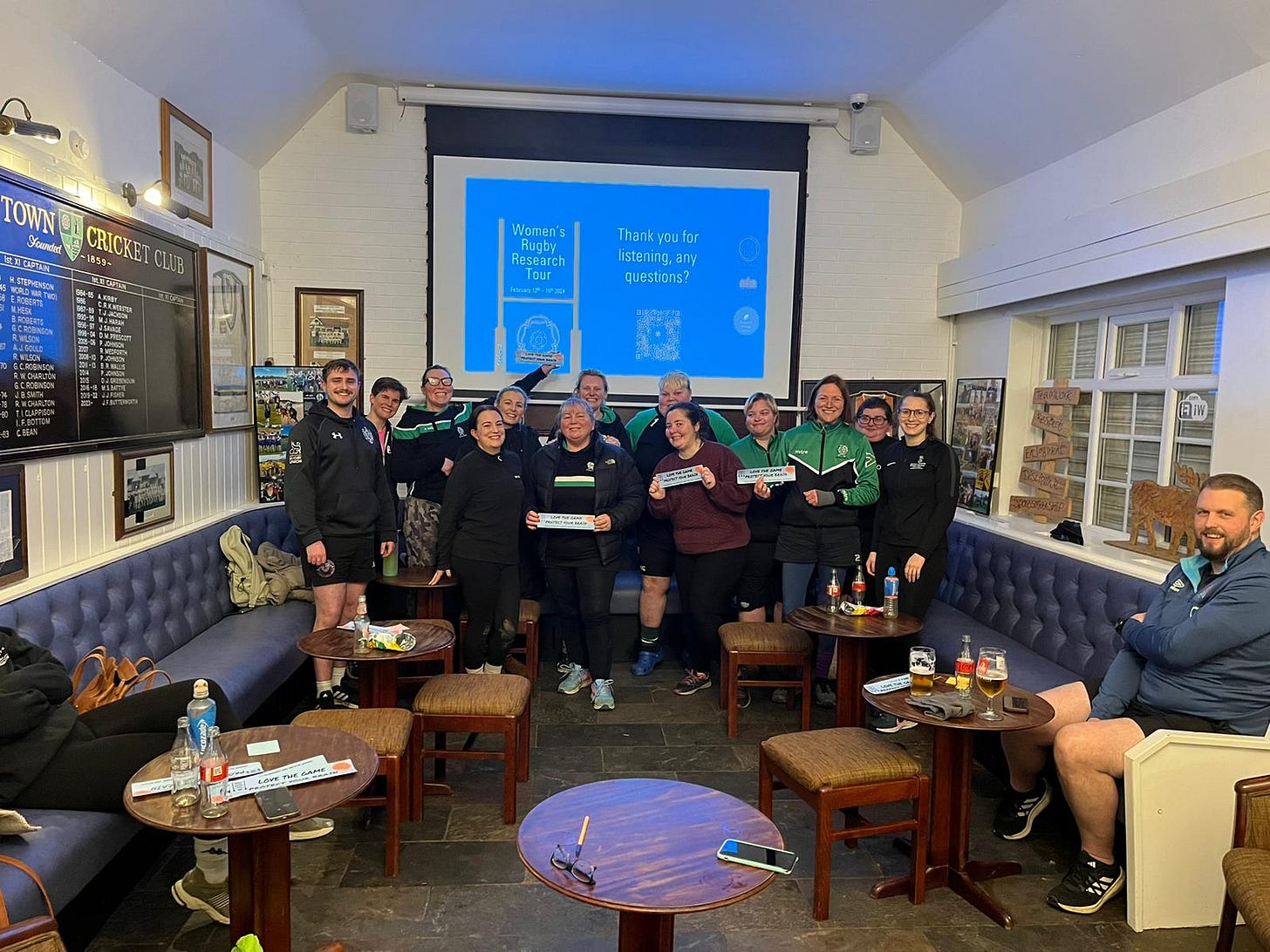Putting players at the centre of tackle research
James Woodward is a PhD Researcher in Biomechanics. They discuss barriers within women's rugby, concussions, why the players are at the heart of the research and how coaches can help.
My research primarily focuses on identifying and characterizing head acceleration events in elite women’s and men’s rugby union.
I work with instrumented mouthguards to record head accelerations, and then we characterise factors such as tackle technique to identify potential risk factors for exposure to head accelerations.
I also explore the data to try and identify trends and differences between men’s and women’s head accelerations, to explore potential interventions that are geared specifically towards women.
We have just completed a tour presenting some of our research into concussion, biomechanical mechanisms of concussive injury in women’s rugby and some more sociological, gendered approaches to understanding injury in women’s rugby.
The tour initially began last year with my colleagues Freja Petrie and Georgia Scott at Swansea University, who were awarded a grant by the Westonbirt Association to present to clubs in North Wales.
As part of our wider Women’s Rugby Research Group, spanning across multiple institutions, we decided to run the tour again this year, again being able to do so thanks to support from the Westonbirt Association. This year, Freja and I toured women’s rugby clubs in Yorkshire.
Whilst a main focus of the tour was to present research and information on concussion in rugby, governed by the “if in doubt, sit them out” priority, we also presented some of our current work exploring mechanisms of concussion and injury in women’s rugby.
Between the two of us, we presented some early research into head acceleration events in women’s rugby, particularly regarding an increased proportion of head accelerations occurring from ground impacts in the women’s game compared to the men’s.
We examined some potential causes for this, exploring proposed physiological differences, but also highlighting the role of gendered factors in injury risk.
These factors included gendered skill gaps that form as a result of differences (and lack thereof) of prioritisation of resources that starts at girls’ sports and functional movement skills at school and goes all the way to when they join women’s clubs who then do not always get access to equitable resources and facilities.
Freja presented some of her findings on the experiences of women in rugby, and we used this tour as an opportunity to hear from players on their experiences
I think particularly in the research world or in academia, there is often a lack of connection between the researchers, their research and the people it will directly affect.
Given how quickly women’s rugby is growing, it is really important that information pertaining to their wellbeing, safety and additionally performance, is shared to the community.
It is also important that we hear from the players and we learn from their experiences. Ultimately, our research affects them, and they can really help support academics in understanding priorities for research.
Without the players, there would be no research so we really need to be working with them, not around them.
It will sound a bit silly but the biggest thing that coaches can do is to listen to their players. More recently, research has highlighted that women in rugby can often feel like they receive the bare minimum from coaches and their clubs and governing bodies.
Things like having access to changing rooms on match days, having the clubhouse open after games, having access to quality refereeing and coaching, having access to pitches and having buy in from the club itself, can and do make a huge difference to the experience of women in rugby.
In terms of head injuries happening in rugby, coaches can improve player wellbeing by making sure they are aware of the guidelines for managing concussion in rugby, both from World Rugby and from the UK Gov guidelines. Additionally, they can make sure they follow the “if in doubt, sit them out” policy.
An increased focus on and continual practice of falling and landing techniques is key, particularly in the women’s game.
The parachute fall is more often than not covered in the first ever training session, and then not looked at, but falling is a key process in the carry or tackle and reinforcing safer landing techniques including tucking the chin could be beneficial for player wellbeing.
Clubs need to buy in to your women’s playing cohorts, from age grade all the way through to seniors. When we toured clubs, those that reported largely positive experiences of rugby, were the teams whose clubs bought in.
This included things like attending their matches, supporting with coaching, opening the clubhouse, providing clean changing rooms and respecting their voice in committee meetings.
Women’s rugby is in a fantastic space of development and improvement. But, without a more accessible and equitable approach, women in rugby face significantly more barriers to participation in comparison to men.
We can address these barriers and we can help, but it has to be an active process as opposed to providing the bare minimum. We can do better.



